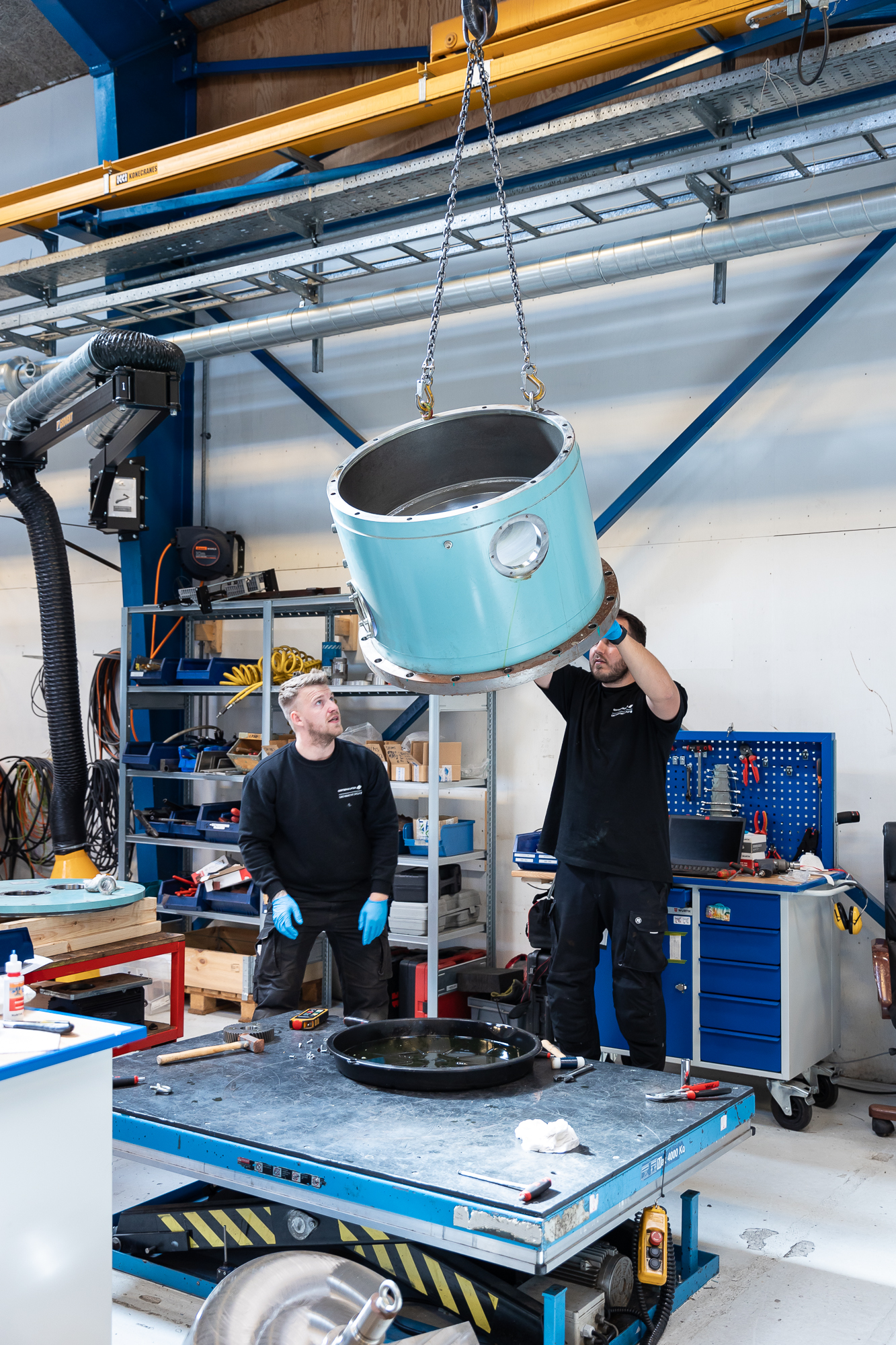
Frequently Asked Questions
Learn more about compensators and the work that they do on vessels.
A compensator is installed on the main engine or in the Steering Gear Room. There are 2 kinds of compensators – the Vertical compensator eliminates 2nd and 3rd-order moments, and the Horizontal compensator eliminates the horizontal moments e.g. 5th or 6th-order moments. A compensator weighs between 650 kg and 2.8 Tons. and comes in various sizes. Based on the forces on board the compensators can be connected to match any existing force.
A Compensator will create a counter force from the excitation forces that originate from either the main engine or the propeller. By using the laws of physics, the counter force will eliminate the excitation forces and thereby remove the vibrations.
Yes, we can install it on both new builds and retrofits. A retrofit can be made either in Dry Dock or during a harbor call.
All vibrations that originate from either 2nd order moments or guide force horizontal moments e.g. 5th or 6th order can be removed almost 100% by installing a compensator. Torsional vibrations are not part of our solution.
All slow-speed 2-stroke engines and all vessel types can have a compensator installed if vibrations are an issue.
Installing a compensator will:
Protect critical equipment including the hull
Improve the safety and health of the crew
Reduce operational costs
Travel at all RPM in all weather conditions
Improve preventive maintenance
How long does it take to install a compensator?
A typical installation is normally done within 2-4 days and can in many cases be done without any off-hire.
A qualified G&O service engineer or a certified service partner will install with assistance from the crew or yard.
To remove vibrations and thereby reduce operational costs, protect critical components, and protect and improve safety and crew health. Traveling at desired RPM without the risk of extensive vibrations.
Contact us
By filling out this form, your request will be shared directly with our experts. We will reply as soon as possible.